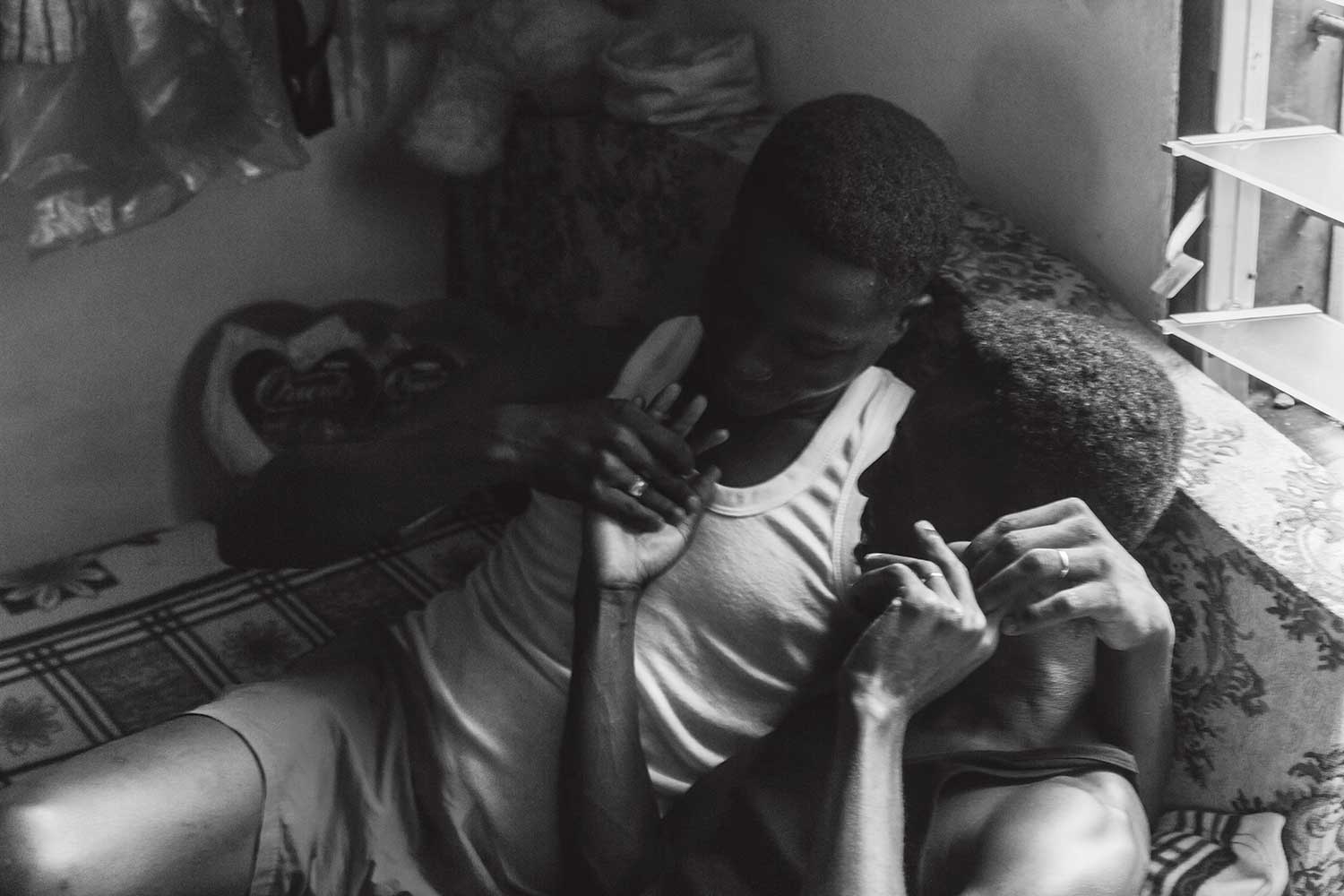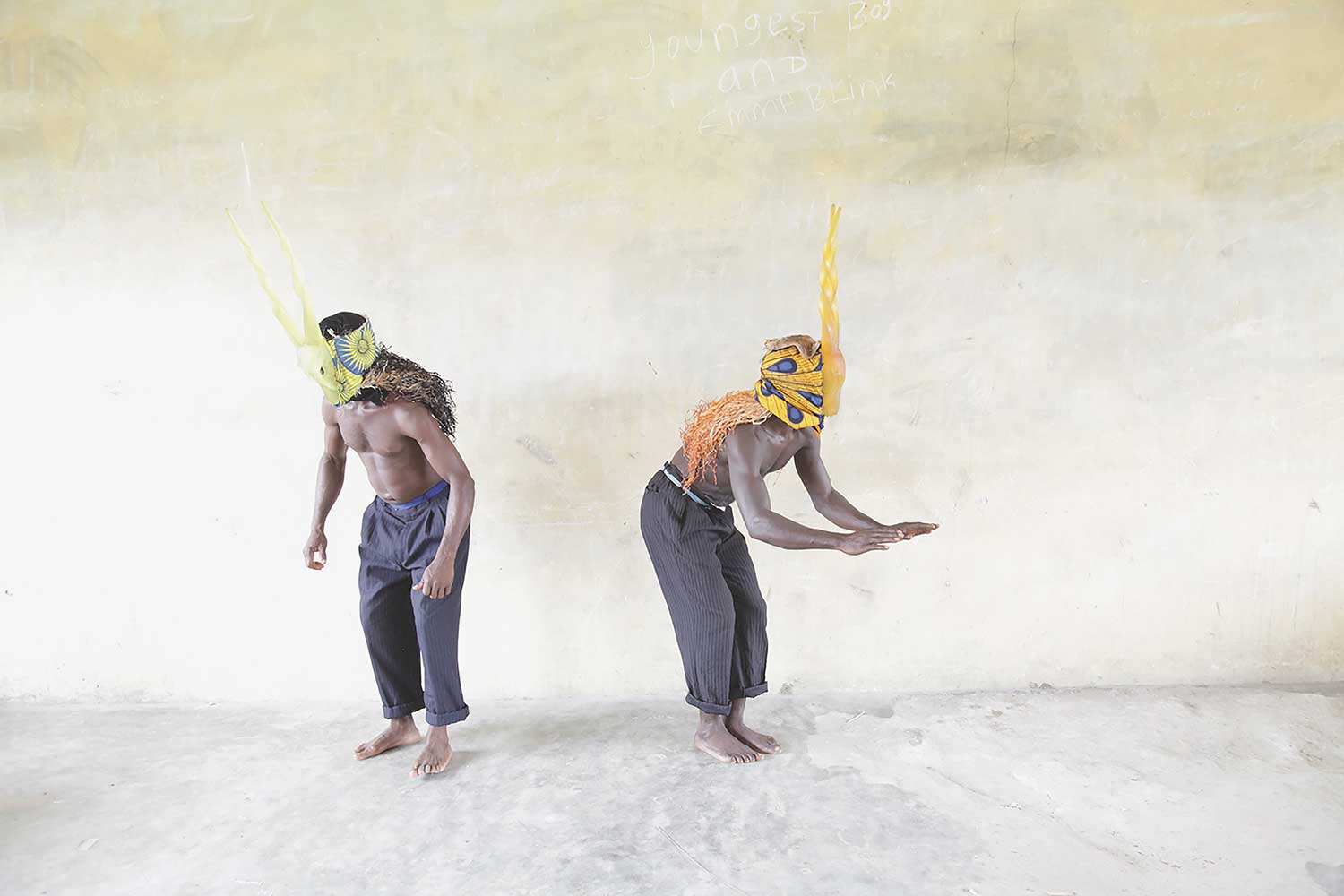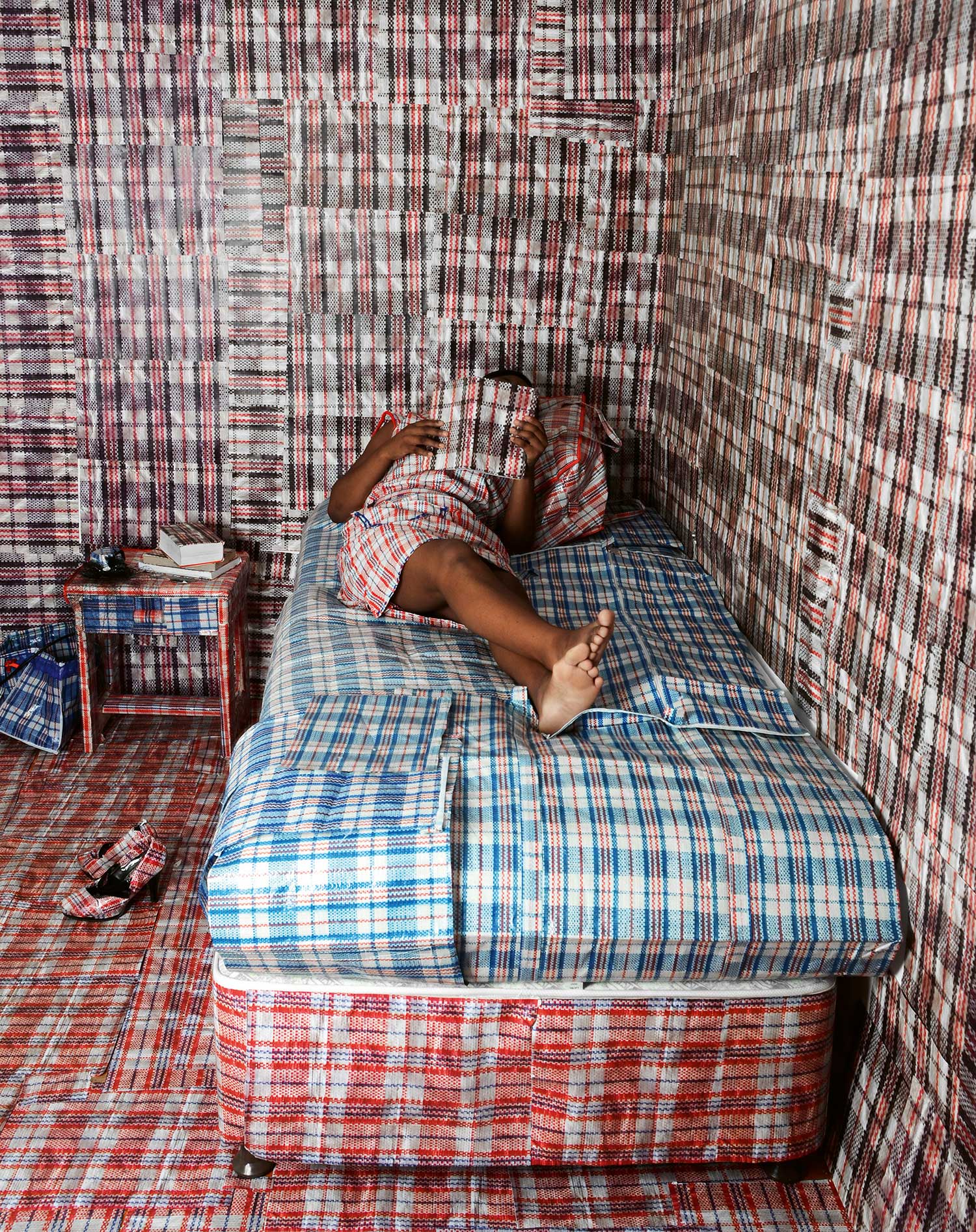Is African Photography a State of Mind?
Lebohang Kganye, Tshimong ka hara toropo II, 2013
© the artist and courtesy Afronova Gallery

Courtesy the artist and Autograph ABP, London
In 1952, Frantz Fanon, the Martinican philosopher and psychiatrist, published a galvanizing work of anticolonial critical theory, Black Skin, White Masks (Peau noire, masques blancs). Fanon often attended to dislocated bodies, and his writing is meticulously depersonalized. The Negro body, for example, “impedes the closing of the postural schema” of the white body. Devalued bodies “experience a destructuration.” For Fanon, the Black body is at risk of becoming overly corporeal. In the book’s last pages he writes, with uncharacteristic plainness, “There are times when the black man is locked into his body.”
After the release of Black Skin, White Masks, Fanon made his home in Algeria, where he secured an appointment as a psychiatrist at Blida-Joinville Hospital. In the following years, he would become an influential participant in the Algerian revolutionary struggle. He worked with patients subjected to the twin tortures of colonial oppression and wartime violence. Their psyches were haunted, their bodies too.

© the artist
Such haunting is explicit in the Franco-Algerian photographer Bruno Boudjelal’s series Fanon (2011), which claimed a corridor of the FotoFest Biennial 2020 in Houston, Texas. (The biennial was originally scheduled to be on view through April 19; online programming continues through the end of the month.) Curated by Mark Sealy and taking as its title and theme African Cosmologies: Photography, Time, and the Other, the multi-venue exhibition and extensive accompanying exhibition catalogue feature thirty-two artists—including Eric Gyamfi, Santu Mofokeng, Eustáquio Neves, and Jean Depara—from all regions of the African continent and several countries throughout the diaspora, among them Brazil, Canada, and Belgium.
Boudjelal’s contribution is likewise transnational. In his Fanon series, Boudjelal tracks the writer’s geographical legacy and finds parallels with his own, traveling to Algeria, Martinique, and other significant sites in the theorist’s life to make hazy black-and-white images that carry the spook and insistent intimacy of dream fragments. Boudjelal zeroes in on Blida-Joinville Hospital, in slivers. He catches a crack on a concrete wall, a blurred figure, just visible, rushing by; a sudden spray of white flowers; a small girl peering through the delicate grid of a screen or gate, something weighty and somber expanding in her face. Beneath one photo, the caption reads: “The Haunted House,” Casino during the French colonization, then center of torture during the war of independence. Now no more people want to live in this because they say it is haunted, Algiers, Algeria. The house is cut off and askew. The landscape leans; the horror disorients.

Courtesy the artist
For Hélène A. Amouzou, the body is bluntly ethereal—to borrow from Fanon, the body is deprived of itself. The Togo-born artist made her 2008 series Self-Portraits in the attic of a transitional housing unit in Belgium as she awaited an official residence visa. In these images, she is blurred and vaporous against the backdrop of an open suitcase, peeling wallpaper, low-slung, exposed rafters. Her gaze is steady and still, though she seems always braced for involuntary movement. This limbo is clearly untenable. Even so, one self-portrait suggests the soft touch of healing: nude, standing ramrod-straight, her arms crossed tightly before her chest in a protective gesture, she appears braced for flight.
Similarly spectral are the images in Lebohang Kganye’s Ke Lefa Laka: Her-story (2013), which are featured in the book Africa State of Mind: Contemporary Photography Reimagines a Continent (2020) by the London-based curator and writer Ekow Eshun, the publication of which happens to coincide with FotoFest. Following the passing of Kganye’s mother in 2010, the South African artist burrowed into the family archive, culling old pictures of her mother as a young woman. Outfitted and coiffed to match, Kganye creates digital photomontages in which she is her mother’s ghostly double. The artist virtually images, in her own words, “a new story and a commonality––she is me, I am her.” By indulging these ambiguously and imperfectly unified bodies, Kganye cultivates a new language for mourning and memory, not unlike Lindokuhle Sobekwa’s diary-format series I carry Her photo with Me (2017–ongoing), which was displayed in glass vitrines at FotoFest, and which mourns the South African artist’s sister by imagining her presence in the bodies of other subjects, in particular the women with whom she made a life after running away from home.

© the artist and courtesy Afronova Gallery
In his introduction to Africa State of Mind, Eshun reflects on photography’s historical entrenchment in the colonial project while also recognizing the presence of African photographers “as far back as the Victorian era,” whose images held “an affinity for their subject matter that runs far contrary to the degrading stereotypes promulgated by Europeans.” The cultivation of both new and newly remembered visual languages is therefore integral to his premise.
In 2020, this premise is not prototypical. Eshun picks up on a schema that is nearly twenty-five years in the making, beginning with the late, acclaimed curator Okwui Enwezor’s 1996 Guggenheim exhibition and catalogue In/sight: African Photographers, 1940 to the Present, and evidenced in Chris Spring’s 2008 anthology Angaza Africa: African Art Now. But unlike Spring, Eshun doesn’t attempt to exhaustively catalogue the continent’s immense sweep of art-makers from a bird’s-eye view. Rather than “any sort of movement,” writes Eshun, the book testifies to “a moment when a generation of African photographers claims the creative freedom to look inwards.” Africa State of Mind is arguably most in alignment with Enwezor’s follow-up to In/sight, the 2006 International Center of Photography exhibition Snap Judgments: New Positions in Contemporary African Photography, which argues for space for the dynamic postcolonial artist, as well as the “uses of Afro-Pessimism,” while acknowledging the aesthetic histories that ground modern image-making on the continent. Threading these progenitors to the diverse group of contemporary photographers assembled in the book, Eshun proposes a concept of Africa that is critically amorphous and sustained by subjectivity.

Courtesy the artist and Tiwani Contemporary
Many of the artists represented within the pages of Africa State of Mind abandon a Western frame of reference in favor of nestling into a pleasurable, elastic alterity. In a section titled “Myth and Memory,” Eshun includes Zina Saro-Wiwa’s series Karikpo: Holy Star Boyz (2018), which draws inspiration from the annual Karikpo masquerade of the Niger Delta’s Ogoni community. Featuring male subjects who don peroxide-bright antelope masks, the images are pointedly playful in their subversion of traditional performance practices. They also introduce to the visual record a set of bodies that are somehow both impossible and inevitable. “The Holy Star Boyz are a new breed,” Saro-Wiwa divulges in her artist statement. “From another place that is still being invented, they are hybrid forms of existence that cannot truly belong.” Unrecognizable and ever-mutating, these bodies initiate what Fanon calls, in the penultimate chapter of Black Skin, White Masks, “the possibility of the impossible.”

© the artist
“The Black presence ruins the representative narrative of Western personhood,” the cultural theorist Homi Bhabha notes in his introduction to the 1986 edition of Black Skin, White Masks. “The White man’s eyes break up the Black man’s body and in that act of epistemic violence its own frame of reference is transgressed, its field of vision disturbed.” Sealy included these musings from Bhabha at FotoFest, as well as from scholars and artists like Fred Moten and Rotimi Fani-Kayode. They’re meant, Sealy says, to act as “moments of reflection”—not captions, but rather “things you might overhear.” Overheard in quick succession, these quotes reveal the festival’s intentions: to lay bare that ruined representative narrative and revisit the body it disturbed. Africa is not a body, although the Western gaze often endeavors to lock it into one. And what does the non-body look like? Eshun’s and Sealy’s projects seek looser frames—a state of mind, a collection of cosmologies. Most notably, they gather artists who have already looked away from the ruins. They’re tending their own bodies now.
The FotoFest Biennial 2020, African Cosmologies: Photography, Time, and the Other, opened on March 8, 2020, in Houston. The biennial is currently closed, but visit fotofest.org for updates and further information.
The accompanying photobook, African Cosmologies: Photography, Time, and the Other will be published by Schilt Publishing in May 2020. Africa State of Mind: Contemporary Photography Reimagines a Continent was published by Thames & Hudson in April 2020.

























